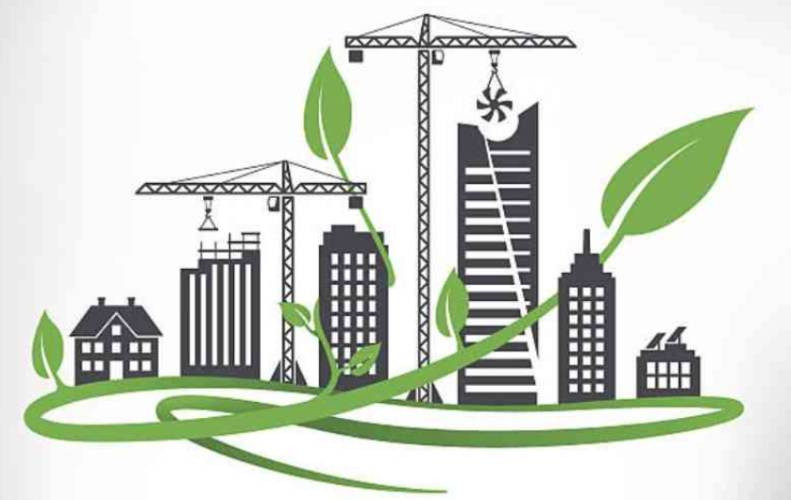Lack of information on what is sustainable, rules and regulations, financing, green technology personnel are some of the reasons Kenyans are not embracing green features in their buildings.
This is was revealed last week during a round table discussion with experts in the building and construction industry at a Nairobi hotel. The round table discussion came ahead of the Africa Green Building Summit that will be held from March 22 to 24.
With over 40 per cent of energy being used in the building industry, according to United Nations Environmental Programme, the focus now is on structures that are environmentally friendly.
The Fourth Assessment Report of the Intergovernmental Panel on Climate Change estimated that between 1970 and 2004, global greenhouse gas emissions due to human activities rose by 70 percent.
“While the full implications of climate change are not fully understood, scientific evidence suggests that it is a causal factor in rising sea levels, increased occurrence of severe weather events, food shortages, changing patterns of disease, severe water shortages and the loss of tropical forests,” said Sylvie Lemmet, Director Division of Technology, Industry and Economics at UNEP.
It is estimated that at present, buildings contribute as much as one third of total global greenhouse gas emissions, primarily through the use of fossil fuels during their operational phase. Lemmet says the building sector contributes up to 30 per cent of global annual greenhouse gas emissions and consumes up to 40 per cent of all energy.
“Given the massive growth in construction in economies in transition, and the inefficiencies of existing building stock worldwide, if nothing is done, greenhouse gas emissions from buildings will more than double in the next 20 years,’’ says Lemmet.
It is in the face of such shocking statistics that today’s buildings need to be green.
For buildings to be certified green, they should be designed to improve building efficiency by minimising water and energy consumption, reduce indoor pollution and deploy waste treatment measures.
According to Muddy Ramrakha, from Kenya Green Building Society, developers have failed to have a holistic approach by not thinking at the long term benefits of their buildings being green.
‘’They need to combine three PPPs namely, people, profit and planet while thinking of going green. Sustainability should be adopted at the design stage and not later after construction since doing so will be very expensive,’’ added Ramrakha.
“Even individual residential buildings need to incorporate green features and not just commercial buildings and tenants need to be educated on importance of a building being green and demand that at the occupancy of the houses since it’s good for your own health,’’ said Stephen Oundo, chairman of the National Construction Authority.
Funding of green buildings is also a challenge since currently, few banks in Kenya have products targeting green buildings.
African Development Bank does funding by channelling the funds through local banks. Currently, the funds have been allocated to Commercial Bank of Africa, Chase Bank and Diamond Trust Bank. However, a manual for funding green buildings in Kenya is set to be introduced soon according to the KGBS.
Misinformation about what sustainable buildings means is also a barrier, according to Matthew Weihs, managing director - Bench Events, who organised the discussion.
Stay informed. Subscribe to our newsletter
“Most often the knee-jerk reaction is that this will be costly but in many cases solutions are driven by the built environment. Things have moved on, however, and it is the will of regulations, the consumers and practitioners that will eventually move the conversation forward,’’ said Weihs director - Bench Events, who organised the discussion.
“Most often the knee-jerk reaction is that this will be costly but in many cases solutions are driven by the built environment. Things have moved on, however, and it is the will of regulations, the consumers and practitioners that will eventually move the conversation forward,’’ said Weihs.
 The Standard Group Plc is a
multi-media organization with investments in media platforms spanning newspaper
print operations, television, radio broadcasting, digital and online services. The
Standard Group is recognized as a leading multi-media house in Kenya with a key
influence in matters of national and international interest.
The Standard Group Plc is a
multi-media organization with investments in media platforms spanning newspaper
print operations, television, radio broadcasting, digital and online services. The
Standard Group is recognized as a leading multi-media house in Kenya with a key
influence in matters of national and international interest.
 The Standard Group Plc is a
multi-media organization with investments in media platforms spanning newspaper
print operations, television, radio broadcasting, digital and online services. The
Standard Group is recognized as a leading multi-media house in Kenya with a key
influence in matters of national and international interest.
The Standard Group Plc is a
multi-media organization with investments in media platforms spanning newspaper
print operations, television, radio broadcasting, digital and online services. The
Standard Group is recognized as a leading multi-media house in Kenya with a key
influence in matters of national and international interest.






